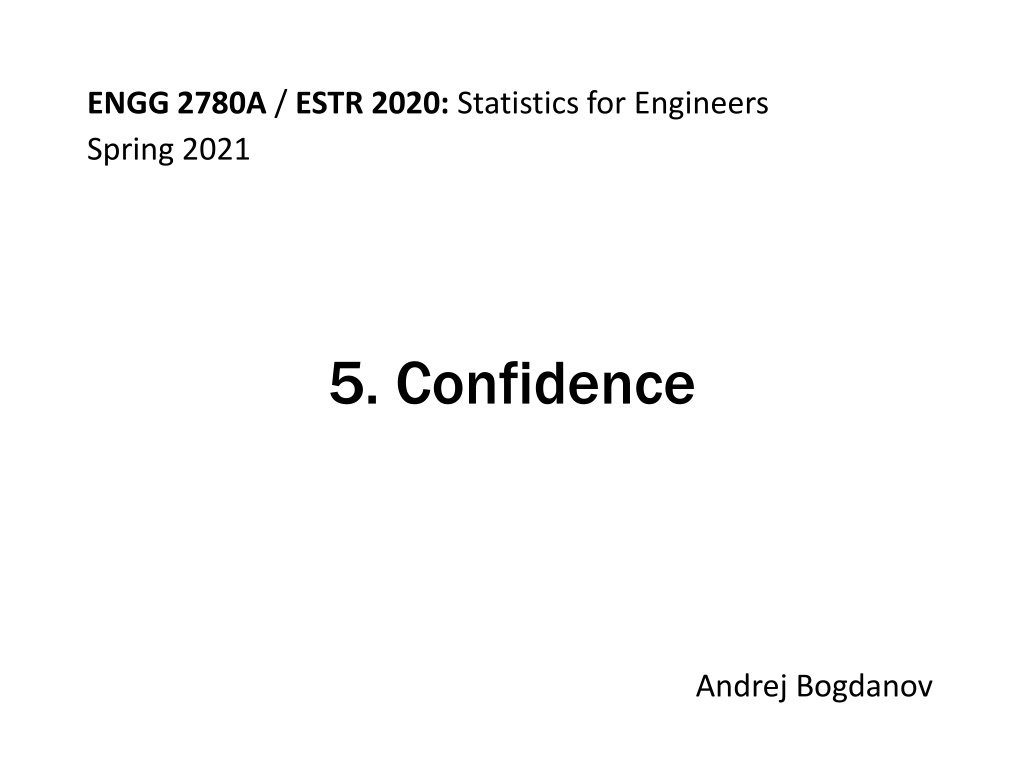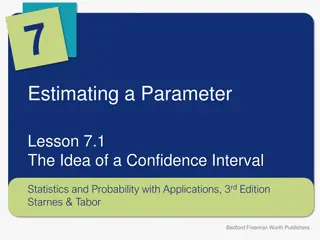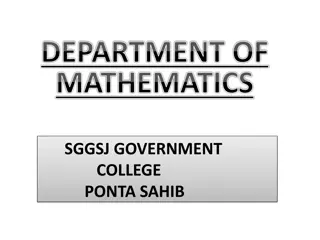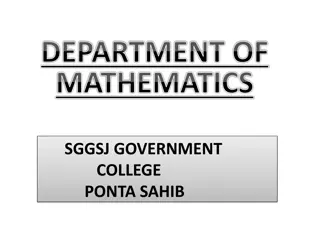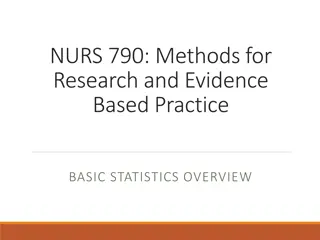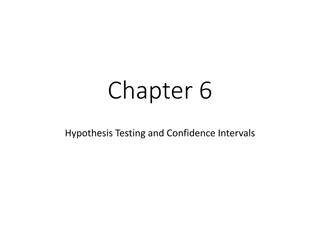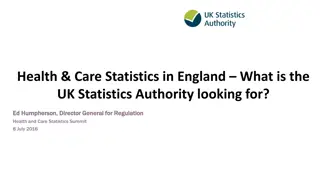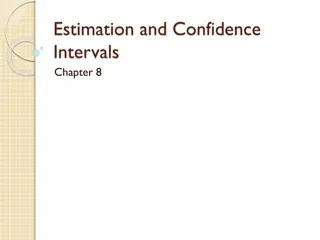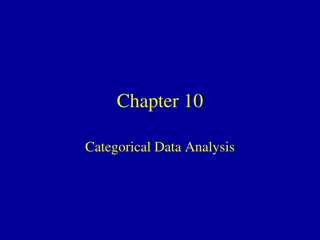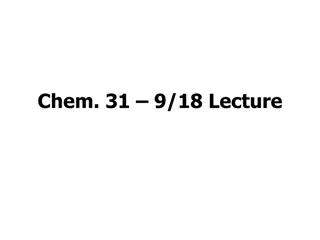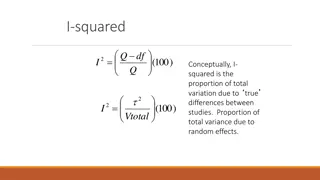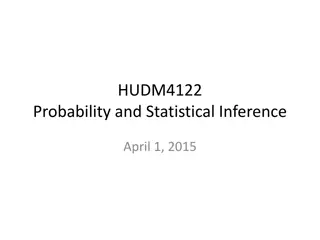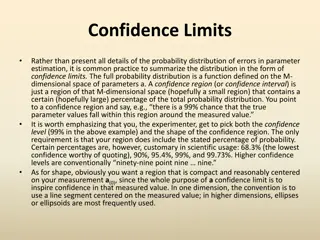Confidence Intervals in Statistics for Engineers
Exploring confidence intervals in statistical analysis, particularly focusing on providing confidence intervals for sample means, normal distributions, exponential means, and indicator samples. The concept of confidence intervals and their importance in interpreting data accurately are discussed with examples and visual aids.
Download Presentation

Please find below an Image/Link to download the presentation.
The content on the website is provided AS IS for your information and personal use only. It may not be sold, licensed, or shared on other websites without obtaining consent from the author.If you encounter any issues during the download, it is possible that the publisher has removed the file from their server.
You are allowed to download the files provided on this website for personal or commercial use, subject to the condition that they are used lawfully. All files are the property of their respective owners.
The content on the website is provided AS IS for your information and personal use only. It may not be sold, licensed, or shared on other websites without obtaining consent from the author.
E N D
Presentation Transcript
ENGG 2780A / ESTR 2020: Statistics for Engineers Spring 2021 5. Confidence Andrej Bogdanov
59 62 57 59 55 55 53 56 44 56 46 49 53 50 52 46 46 44 51 48 52 38 46 45 45 39 42 49 45 44 39 41 37 46 40 44 41 40 32 44 49 35 36 31 32 46 30 35 45 41 33 33 37 42 39 34 35 37 43 38 42 27 36 39 38 37 33 33 40 44 25 32 28 43 33 37 40 39 30 25 25 24 32 23 23 31 28 19 34 39 23 37 32 24 28 33 22 31 24 33 30 31 26 25 34 20 23 28 21 28 22 15 31 25 21 21 29 29 21 15 20 29 30 20 29 18 27 19 36 16 15 32 24 13 15 20 15 20 26 26 16 15 29 27 6 12 16 5 7 11 13 15 histogram of X (n = 3)
Confidence intervals ^ ^ A p-confidence interval is a pair -, +so that ^ ^ P( is between - and +) p
Give a 95%-confidence interval for the mean from 30 Normal( , ) samples
Confidence interval for normal mean X1, X2, , Xn are Normal( , ) samples sample mean X is Normal( , / n) P(X z / n X + z+ / n) = P( z+ Normal(0, 1) z ) 95% confidence for z = z+ 1.96
How many Normal(, 25) samples do you need for a 95% confidence, width 10 interval?
My last emails arrived 25 and 58 minutes ago. Give a 50%-confidence interval for the mean
Confidence interval for exponential mean X1, X2, , Xn are Exponential( ) samples n X is Erlang(n, 1) (a.k.a. Gamma(n, 1)) P(nX/z+ 1/ nX/z ) = P(z Erlang(n, 1) z+) https://homepage.divms.uiowa.edu/~mbognar/applets/gamma.html https://homepage.divms.uiowa.edu/~mbognar/applets/gamma.html
Come up with a 95% confidence interval for p from 20 Indicator(p) samples https://homepage.divms.uiowa.edu/~mbognar/applets/bin.html https://homepage.divms.uiowa.edu/~mbognar/applets/bin.html
p X p X
Confidence interval for Indicator(p) P(A zB p A + zB ) P( z Normal(0, 1) z) X(1 X)/n + z2/4n2 1 + z2/n X + z2/2n 1 + z2/n B = A =
n = 20, 95% level p X explicit calculation formula via normal approximation
Simplified confidence interval P(A zB p A + zB ) P( z Normal(0, 1) z) X(1 X)/n + z2/4n2 1 + z2/n X + z2/2n 1 + z2/n B = A =
34 of 100 Indicator(p) samples came out positive. Give a 95% confidence interval.
n = 20, 95% level p X traditional formula simplified formula
How many (simplified) samples do you need to get a 0.1 width interval with 95% confidence?
My last emails arrived 25 and 58 minutes ago. Give a 50%-upper confidence bound for mean
Confidence bound A p-upper confidence bound is so that P( ) p A p-lower confidence bound is so that P( ) p
Confidence bound for normal mean X is mean of nNormal( , ) samples P( X + z / n) = P(Normal(0, 1) z) P( X z / n) = P(Normal(0, 1) z) 95% confidence for z 1.645
